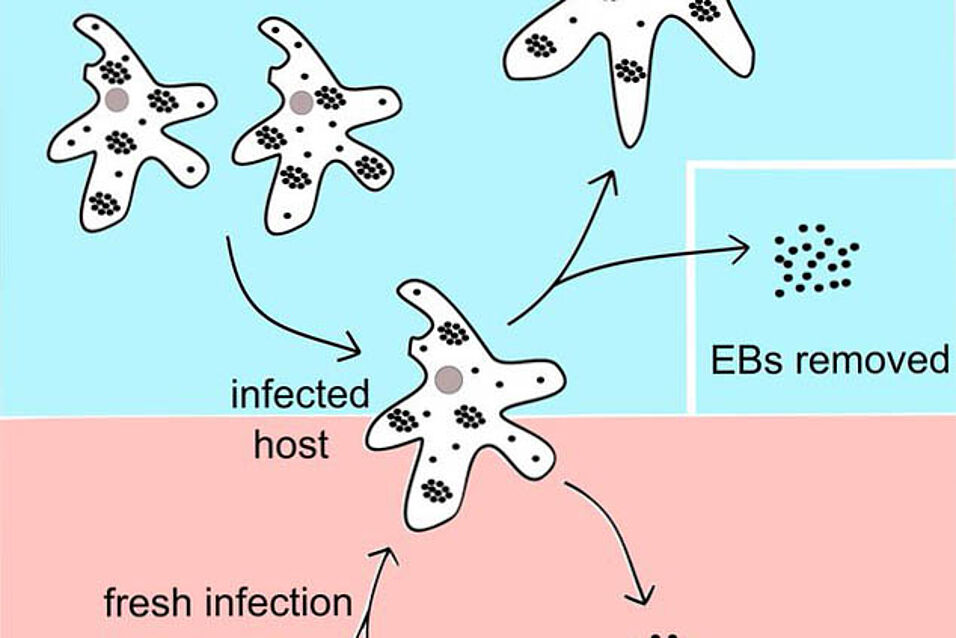Microbe–host relationships are determined by the mode of symbiont transmission from host to host. In this study, a team around Paul Herrera and Matthias Horn describes how bacterial symbionts related to the pathogen Chlamydia trachomatis increased in infectivity and virulence toward their amoeba host when transmission to a new host was essential for survival. The enhanced parasitism is a result of genomic changes and a pronounced switch of gene expression altering the symbionts’ mechanisms for host interaction. Our study provides both a molecular explanation as well as a blueprint for how changes in gene expression are sufficient to confer enhanced parasitism in microbes.
